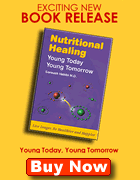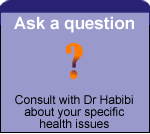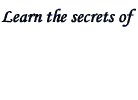|
|
|
||||||||||||
|
|
||||||||||||
|
|
Contentment |
||||
For human body to function it needs to produce energy. Energy production is a complex process. It happens through absorption of macronutrients, micronutrients and many hormonal and enzymatic reactions. Oxygen is much needed in the energy cycle. As a result of this process and process of utilisation of energy, oxygen loses an electron and becomes a free radical. Oxygen as vital as it is for living, excess of it can be detrimental to our health. Indeed, free radicals are oxygen atoms, which are produced in the process of energy production and utilisation. However, these atoms are abnormal as they are missing an electron in their outer orbit. Having one unpaired electron in the outer orbit means that these free oxygen radicals are ready to bind to any substance within their vicinity and start a process, which is called oxidation. Free radicals could become more volatile and create more free radicals, and if they are not neutralised fast enough, they could damage cell, cell wall or part of the cell including DNA (deoxyribonucleic acid). The process of oxidation is the root cause of degenerative diseases. It is the same process whereby causes body to decay, fruit to rotten, iron to rust and butter to turn rancid. MitochondrionMitochondria are tiny oval shape organs within the cytoplasm of the cell. Mitochondrion is the very place for production of energy. They are constantly busy generating energy for various body functions. However, the more energy they produce the more free radical is created which could destroy mitochondria. Mitochondria are extremely sensitive to free radical damage, as they have neither repair systems nor protective coating. It is said that they are 2000 times more vulnerable to free radical damage than other parts of the cell. When the mitochondria are oxidised they become less efficient and therefore can not produce sufficient amount of energy, hence one would feel lethargic. As we age the number of mitochondria will decrease resulting in less energy and less vitality. From this one concludes that if the mitochondria are kept healthy and viliant, one should feel on the top of the world. How do we do that? I am going to tell you later. Free radicals have been incriminated in more than one hundred disease conditions in humans. This includes premature aging, atherosclerosis, coronary heart disease, stroke, diabetes, cancer, arthritis, Alzheimer, AIDS, Parkinson’s disease, and many more. Depending on what part of the body is exposed to free radical damage, the relevant disease will follow. For instance, smoking is a major predisposing factor in development of heart attack. This is mainly due to exponential free radical production as a result of smoking, hence damage to the coronary arteries. Exponential amount of free radicals is produced by stress, cigarette smoking, medication, radiotherapy, chemotherapy, pollution in the air, water and food, excessive exercise, sunlight and fatty food. Degenerative diseasesIt is so ironic that despite all the advancement in medicine and medical technology people are dying of degenerative diseases more than ever before. Heart attack, stroke and cancer are the top three killers in the western world. In the old days people died of infectious diseases such as; pneumonia, tuberculosis, poliomyelitis and the like. Today we are dieing of degenerative diseases. Degenerative diseases occur due to degeneration of the cell as a result of oxidative stress caused by free radical damage. Depending on what organ is subjected to degeneration of the cell, that part of the body will be affected. There are over one hundred degenerative diseases reported to date. These include cardiovascular disease (CVD) such as heart attack, stroke, atherosclerosis, and hypertension. Other degenerative diseases include cancer, diabetes, arthritis, Alzheimer’s dementia, Parkinson’s disease and macular degeneration to name a few. AntioxidantsAntioxidants are cell protectors. Antioxidants are friends and free radicals are enemies. Antioxidants are lifesavers. Antioxidants are free radical scavengers. Antioxidants are disease preventers and fighters. Antioxidants like oxygen and water are crucial for the well being of human race. Antioxidants are substances that work against the dark side of oxygen. Antioxidants have the potential to render free radicals harmless. It is like a shield putting in front of the fireplace to protect your carpet being damaged. How do they do that? As I mentioned earlier free radicals have one unpaired electron in their outer orbit making them unstable and ever ready to bind to any cell or substance in the vicinity. Antioxidants give up one of their electrons to free radicals to neutralise their damaging effect. There seems to be an element of sacrifice in this process. In this way the antioxidant becomes a free radical itself. But another antioxidant will come to the rescue. For example, vitamin C loses one electron to render a free radical harmless and in this manner it turns into a free radical itself. However, as soon as this happens vitamin E will come to the rescue and give one electron to rejuvenate vitamin C in order to continue its antioxidant function. As you can see a chain reaction takes place. That is why it is said that the vitamins work in synergy. That means 1+1 is not 2 but 6, 10 or even 50. As such selenium makes vitamin E 50 times more active as an antioxidant. Vitamin C also regenerates vitamin E. That is why one needs to take the right combination of vitamins, trace elements and antioxidants. These antioxidants need to complement each other in order to continue their vital work. This could be likened to a symphony orchestra in which so many musicians and instruments are participating. Imagine they are playing symphony 9 of Beethoven or Swan Lake of Tschaikowsky. In order to achieve the highest quality performance not only are the whole members of the orchestra needed but also they should play in harmony. If one were missing the performance would not be as great. So is our health. If the orchestra of proper nutrients were not available to our cells, our health would not be optimal and degenerative disease will ensue. |
Vitamin C was researched in the University of Sydney, Australia. This was published in the Journal of the American College of Nutrition, 1996; 15; 154-158. In this study young women were given 1000 mg of vitamin C per day. The result was 16% drop in LDL-cholesterol and overall cholesterol ratio reduction. Vitamin E and heart disease.2002 patients with previous CHD were studied in a Double Blind Placebo Controlled (DBPC) style. They took up to 800I.U. of vitamin E per day There was amazing 75% reduction in heart attacks. This was published by Stephen in the Lancet (1996; 347) Primary AntioxidantsOur body has its own antioxidant system in place to fight free radical assault. This consists of Superoxide Dismutase (SOD), Glutathione Peroxidase, Caeruloplasmin, Transferrin, Ferritin and Catalase. However, the body cannot produce enough antioxidants on its own to fight the free radical attack. The rest should come from external sources, namely foods. These are called Secondary Antioxidants such as vitamins A, C and E, albumin and bilirubin. The best sources of vitamins are organically grown fresh fruits and vegetables. Alas, we do not seem to get enough of them for various reasons. As outlined previously, our food is highly processed and modified and therefore lacking the right amount of micronutrients needed to prevent free radical damage. Not only are these vitamins, trace elements and antioxidants necessary for assisting the inner antioxidant system, but they also work independently of the natural antioxidant system. For instance, selenium has a role in glutathione peroxidase system, copper in feroxidase and zinc in DNA-dependent RNA polymerase. Superoxide dismutase (SOD) is dependent on copper and zinc. Vitamin B6 is involved in 60 enzymatic reactions; it plays an important role in carbohydrate and lipid metabolism; and it is involved in the synthesis of essential fatty acid (EFA) by products called prostaglandins. As you can see our natural antioxidant defence system needs these vitamins. The most well known antioxidants are vitamin C, A and E. There are numerous other antioxidants such as bioflavonoids, coenzyme Q10, Alpha lipoic acid, N-acetyl L-cysteine, acetyl-l-carnitine, cruciferous, lutein, mixed carotenoids, proanthocyanodins and many more. Tertiary antioxidantsThese are like Methionine Sulphoxide Reductase and DNA repair enzymes, which deal with repairing cell structures damaged by free radicals. However, in order to prevent oxidative stress one needs to follow a low stress diet, have regular meals, to exercise regularly, to take nutritional supplements, to relax, pray and mediate and more importantly to be content under all circumstances. Bahá’u’lláh the prophet founder of the Bahá’í Faith says: “Verily the most necessary thing is contentment under all circumstances; by this, one is preserved from morbid conditions and from lassitude. Yield not to grief and sorrow; they cause the greatest misery. Jealousy consumeth the body and anger doth burn the liver; avoid these two as you would a lion”. Soroush Habibi MD Further readings:
For more detailed information and specific recommendations, please [click here] to become a member of DrHabibi.com |
|||
|
|
|
||||||||||||
|
|




